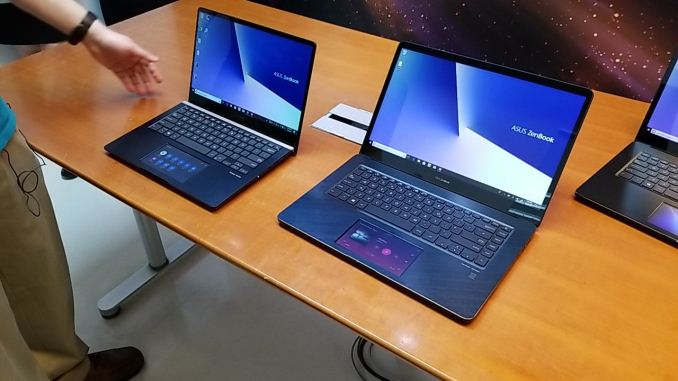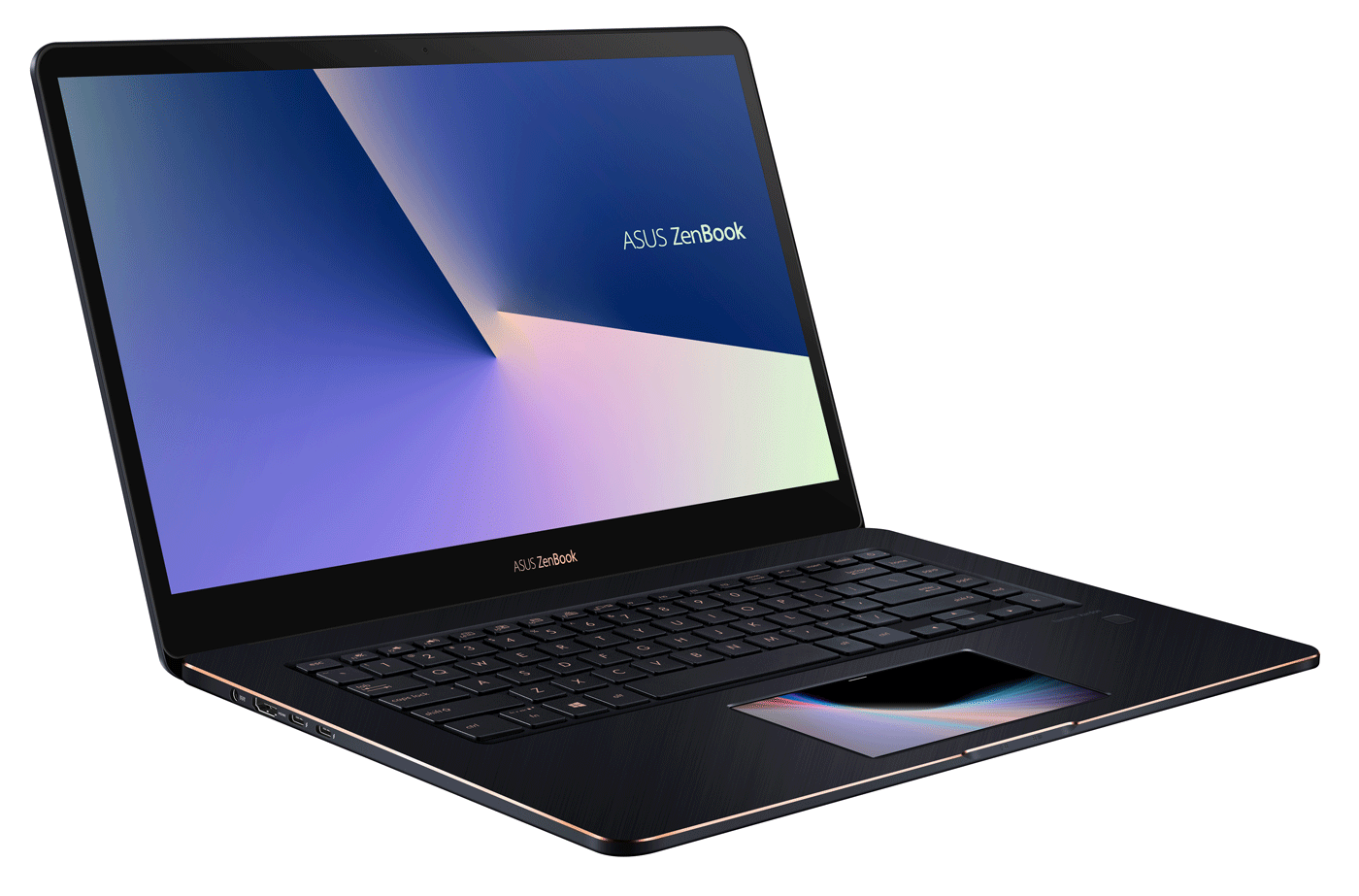Feature
ASUS ZenBook Pro 15 UX580: Intriguing ScreenPad, superior performance

A major highlight at Computex in Taipei this year was Taiwanese tech major ASUS’ ZenBook Pro 15 UX580 — the main attraction of which is a ScreenPad that is essentially a touchpad composed of an LCD touchscreen placed beneath its trackpad.
The concept is inspired by the Touch Bar that we saw on Apple MacBook Pro back in 2016 and can also be used as a mini secondary monitor for multi-tasking.
The notebook comes with powerful internals such as 8th-generation Intel Core i9-8950HK hexa-core processor, NVIDIA GTX 1050 Ti graphics, 16GB DDR4 RAM and 1TB storage and the company is touting it as a professional-grade laptop that promises superior performance.

The device is available in India at a starting price of Rs 1,79,990. Here is what we think of it.
Carrying forward the legacy of ASUS ZenBook series, the ZenBook Pro 15 UX580’s design is not much of a change from the previous iterations.
That being said, the device does have a few tweaks such as the colour variant. The ZenBook Pro has been introduced in a “Deep Dive Blue” with rose gold trimmings that looked tasteful.
The inside of the device has a beautiful brushed metal finish, which handled smudges and fingerprints well.
The back of the lid has ASUS’s trademark concentric circle design, while the body has a spun-metal finish with two-phase anodised edges which makes it solid and sturdy.
Touchpads were originally introduced in 1992 and, since then, laptop manufacturers have added handy software-based gesture supports and trying to make them more accurate.

When we swiped down from the top of the screen, the 5.5-inch ScreenPad in the ZenBook Pro let us access a host of mini apps such as the calculator, number key, music player and calendar.
One can also access the launcher from the display, which can quickly open Windows programmes that makes the ScreenPad nifty.
The ZenBook Pro’s ScreenPad is easier to work with than Apple’s Touch Bar as the former offers much more room.
The bezels of the laptop are just 7.3-mm; the bottom bezel, which is slightly thicker, houses the ASUS ZenBook logo.
The tiny bezels lend a 83 per cent screen-to-body ratio to the device and give the illusion of a wider screen.
The overall design was subtle with gold edges being the only blingy detail on the device.
According to the company, the screen is Pantone-certified and supports a wide colour gamut with 100 per cent Adobe RGB.

The 15.6-inch 4K touchscreen display was gorgeous to look at. The details looked sharp and colours looked rich. The 400nits brightness made it good for outdoor tasks.
The laptop seamlessly handled shuffling between dozens of browsing windows, playing games and surfing videos. The graphic capabilities of the device are good enough too.
Weighing 1.88kg and measuring 18.9-mm in thickness, the ASUS ZenBook Pro is the closest to the 15-inch Apple MacBook Pro.
It is safe to say that it is perhaps the only notebook that is as thin and light with such powerful internals.
What does not work?
The laptop fell slightly short in delivering on battery life. We managed to get around seven hours of juice with the ScreenPad on. Users who wish to squeeze out more battery life, may turn the ScreenPad off.
Conclusion: ASUS’ ZenBook series has been largely successful and the ZenBook Pro 15 UX580 is no exception. This is a powerful laptop that promises performance with a unique ScreenPad experience.
Entertainment
Meghalaya Reserves Legalized Gambling and Sports Betting for Tourists

The State Scores Extra High on Gaming-Friendly Industry Index
Meghalaya scored 92.85 out of 100 possible points in a Gaming Industry Index and proved to be India’s most gaming-friendly state following its recent profound legislation changes over the field allowing land-based and online gaming, including games of chance, under a licensing regime.
The index by the UK India Business Council (UKIBC) uses a scale of 0 to 100 to measure the level of legalisation on gambling and betting achieved by a state based on the scores over a set of seven different games – lottery, horse racing, betting on sports, poker, rummy, casino and fantasy sports
Starting from February last year, Meghalaya became the third state in India’s northeast to legalise gambling and betting after Sikkim and Nagaland. After consultations with the UKIBC, the state proceeded with the adoption of the Meghalaya Regulation of Gaming Act, 2021 and the nullification of the Meghalaya Prevention of Gambling Act, 1970. Subsequently in December, the Meghalaya Regulation of Gaming Rules, 2021 were notified and came into force.
All for the Tourists
The move to legalise and license various forms of offline and online betting and gambling in Meghalaya is aimed at boosting tourism and creating jobs, and altogether raising taxation revenues for the northeastern state. At the same time, the opportunities to bet and gamble legally will be reserved only for tourists and visitors.
“We came out with a Gaming Act and subsequently framed the Regulation of Gaming Rules, 2021. The government will accordingly issue licenses to operate games of skill and chance, both online and offline,” said James P. K. Sangma, Meghalaya State Law and Taxation Minister speaking in the capital city of Shillong. “But the legalized gambling and gaming will only be for tourists and not residents of Meghalaya,” he continued.
To be allowed to play, tourists and people visiting the state for work or business purposes will have to prove their non-resident status by presenting appropriate documents, in a process similar to a bank KYC (Know Your Customer) procedure.
Meghalaya Reaches Out to a Vast Market
With 140 millions of people in India estimated to bet regularly on sports, and a total of 370 million desi bettors around prominent sporting events, as per data from one of the latest reports by Esse N Videri, Meghalaya is set to reach out and take a piece of a vast market.
Estimates on the financial value of India’s sports betting market, combined across all types of offline channels and online sports and cricket predictions and betting platforms, speak about amounts between $130 and $150 billion (roughly between ₹9.7 and ₹11.5 lakh crore).
Andhra Pradesh, Telangana and Delhi are shown to deliver the highest number of bettors and Meghalaya can count on substantial tourists flow from their betting circles. The sports betting communities of Karnataka, Maharashtra, Uttar Pradesh and Haryana are also not to be underestimated.
Among the sports, cricket is most popular, registering 68 percent of the total bet count analyzed by Esse N Videri. Football takes second position with 11 percent of the bets, followed by betting on FIFA at 7 percent and on eCricket at 5 percent. The last position in the Top 5 of popular sports for betting in India is taken by tennis with 3 percent of the bet count.
Local Citizens will Still have Their Teer Betting
Meghalaya residents will still be permitted to participate in teer betting over arrow-shooting results. Teer is a traditional method of gambling, somewhat similar to a lottery draw, and held under the rules of the Meghalaya Regulation of the Game of Arrow Shooting and the Sale of Teer Tickets Act, 2018.
Teer includes bettors wagering on the number of arrows that reach the target which is placed about 50 meters away from a team of 20 archers positioned in a semicircle.
The archers shoot volleys of arrows at the target for ten minutes, and players place their bets choosing a number between 0 and 99 trying to guess the last two digits of the number of arrows that successfully pierce the target.
If, for example, the number of hits is 256, anyone who has bet on 56 wins an amount eight times bigger than their wager.











